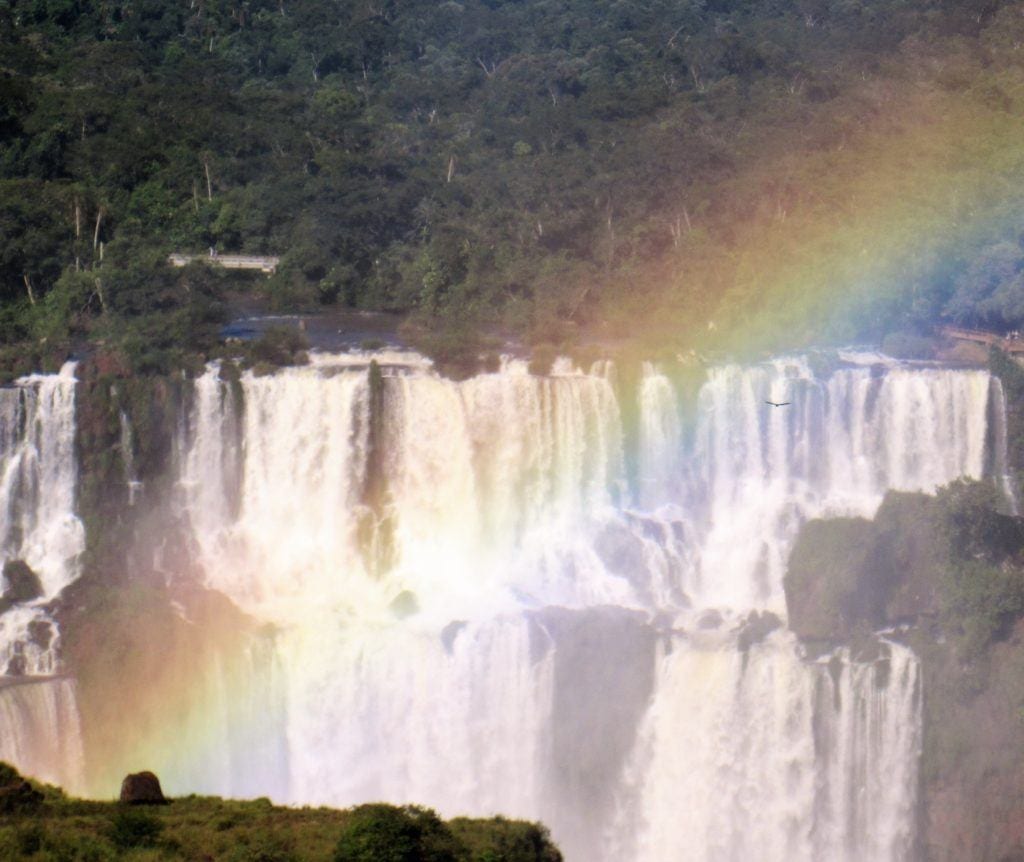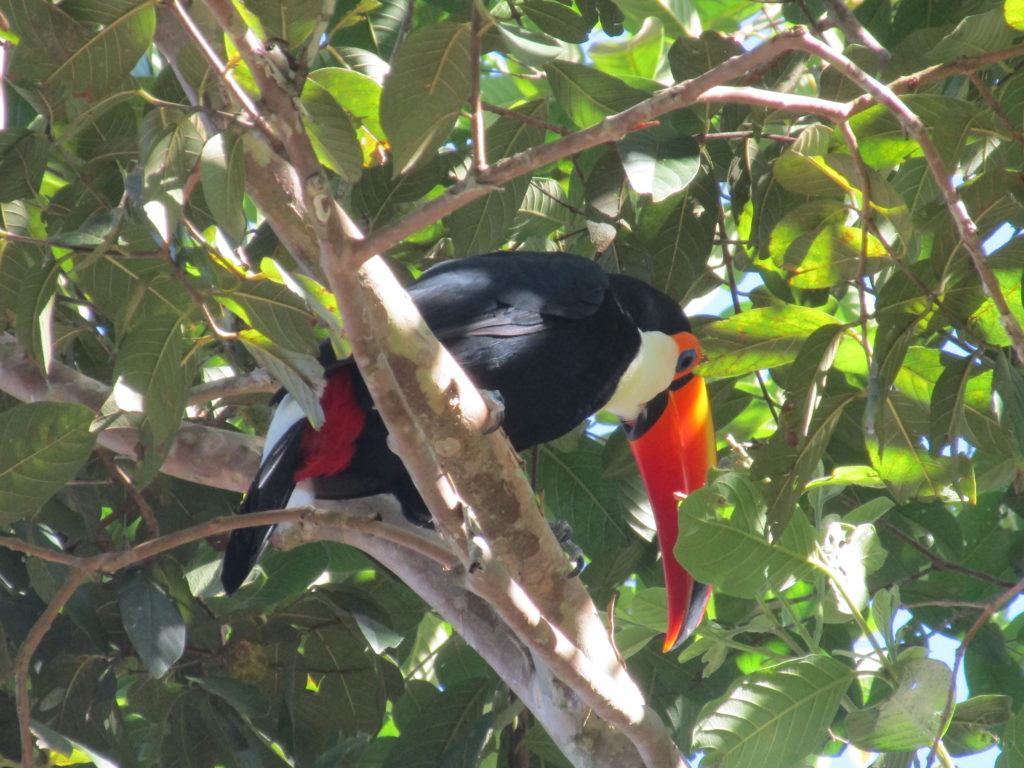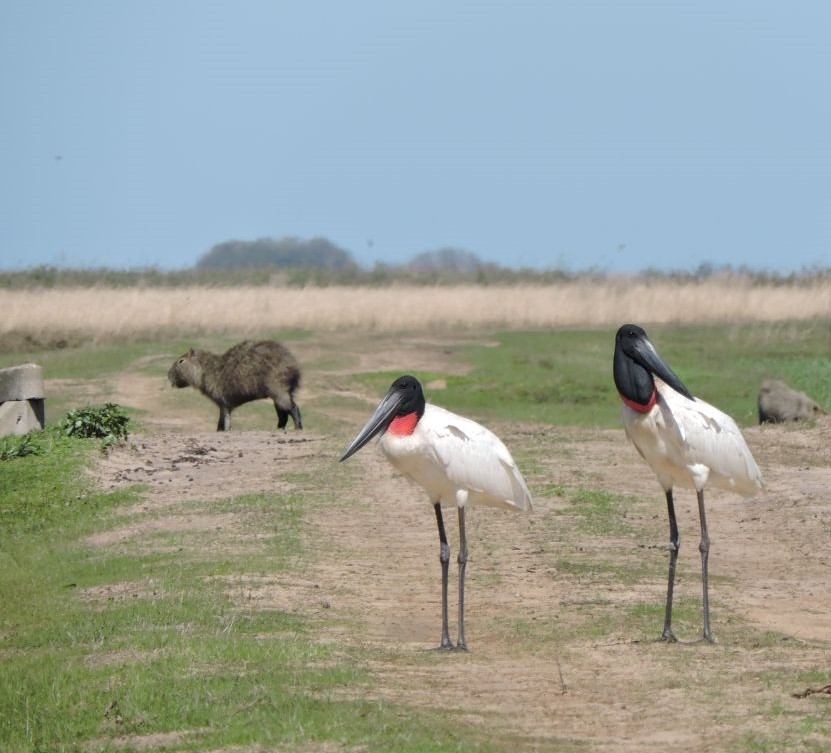Americans already love Argentina for its cultural riches, from sophisticated Buenos Aires to scenic Patagonia. But most travelers still miss out on one of Argentina’s best-kept secrets, the natural paradise of the Esteros wetlands. Contributing Writer Lynn Langway explores this little-known national treasure in the country’s Northeast corner, which could soon become a big national park—and the next hotspot for green travel.
The wildlife is so abundant in the Esteros del Ibera wetlands of Argentina that the birds will often find you. On my visit late last winter, it was hard to overlook the rare Jabiru storks I’d hoped to see, when three giant specimens—each more than four feet tall—sauntered slowly down the middle of a dirt road right in front of me with their shiny black heads and scarlet collars glowing in the sun. Nor did it take much expertise to locate the plump Southern Screamers that chuckled nervously and shrieked from the brush whenever I approached or the ostrich-like Rheas that galumphed beside the trees.
The Esteros is the Everglades on steroids, a vast nature preserve in Corrientes Province that’s one of South America’s least-traveled places to see wildlife. Second only in size to Brazil’s Pantanal, these wetlands are far more than a dismal swamp with up to 7,800 square miles of open grasslands, lagoons and marshes that remind some visitors of East Africa. More than 350 bird species are on display—along with howler monkeys, crocodile-like caimans, maned wolves and other exotic creatures—making this a paradise for nature-lovers.
As avid birders, my husband and I were eager to explore this hidden gem on our way up to see the Northeast’s most famous sight, Iguazu Falls. Until a few years ago, the Esteros was difficult to get to, daunting to traverse, and lacking accessible hotels.
But conditions began to improve after 1998, when the late Douglas Tompkins, founder of the North Face outerwear company, started buying and upgrading private acreage with his wife, Kristine Tompkins, a former CEO of the outfitter Patagonia. Through their two foundations, Tompkins Conservation and the Conservation Land Trust, the American philanthropists donated the land to the Argentine government in hopes of creating a national park. They recently helped to do this in Chile, and a proposal to do something similar in Argentina has been making its way through the legislature.
The Esteros still isn’t that easy to reach, requiring a 90-minute flight from Buenos Aires to the city of Posadas, followed by a drive of perhaps 4 hours over rutted dirt roads (or, for the most leisurely travelers, an overnight sleeper bus) to get to the ecolodges that lie deep in the wilderness.
Now there’s also a convenient alternative. The charming 13-room Hotel Puerto Valle is located on the Parana River at the eastern border of the still-expanding park, only 40 minutes away from the airport. Our airy riverside suite was elegant, and the dining room served first-rate local wines and cuisine–especially at a gaucho-style barbecue with homemade chorizo sausages, succulent steaks and home-grown vegetables. The Hotel Puerto Valle was about $800 per night for our deluxe riverfront suite (including food, excursions by boat or on foot with an expert nationalist and pickup at the airport).
The real highlight of our three-day stay, however, was the daily outings with the hotel’s engaging young naturalist, Agustina Vera. On foot, driving the pickup, or guiding us in a small boat, this eagle-eyed expert could spot the tiniest hummingbirds and butterflies, or point out four burrowing owls camouflaged in the grass. At lunchtime, she’d unfold a folding table and canvas chairs for a safari-like picnic lunch in the shade as we watched families of plump capybara, the world’s largest guinea pig, wallow like hippos in the mud.
In recent years, the Tompkins conservationists have sponsored the reintroduction of several native species that had almost disappeared here due to poaching, hunting, and agricultural expansion. While we weren’t lucky—or nocturnal—enough to see any of the newly released jaguars, we did watch three of the green-winged macaws that were rescued from captivity take flight in the wild. They rocketed so fast overhead that they left only blurs of red, green and yellow on our cameras. We encountered almost no other humans, other than park rangers or the occasional gauchos from neighboring ranches.
Our last stop in Iguazu Falls–about 150 miles away–was northeast (with a break halfway to walk the imposing ruins of the 17th Century San Ignacio Jesuit Mission).
Wider and taller than Niagara, the 275 or so cataracts that make up the falls thunder down cliffs along Argentina’s border with Brazil. Catwalks and hiking trails allow you to get close to the most dramatic cascades in this UNESCO World Heritage site, where you can marvel at the rainbows arcing through the mist at national parks on either side.
We stayed in a modest ecolodge, La Cantera Lodge, on the Argentine side and enjoyed the view from both countries over two days, though we were sometimes disappointed that we had to compete for rail space with holiday crowds. It was about $150 a night for a superior room in peak season, mid-February, including a breakfast buffet.
It called for a private excursion, and we lucked out and found one with noted Argentine naturalist Emilio White, who is licensed to enter the park off-hours.
Picking us up at our hotel at 6 a.m., he led us to a secluded spot overlooking a cascade that’s beloved by birds. For 90 magical minutes, until the gates opened, we shared a thermos of coffee in tin cups and savored the experience of having the most magnificent waterfalls in South America all to ourselves. Well, not counting the 100 or so White-Eyed Parakeets that wheeled madly from tree to tree, trying to escape the hungry Hawk Eagle and the Peregrine Falcon that kept dive-bombing them from either side, or the darting kingfishers and swifts as well as the vivid toucans and butterflies.
Otherwise, it was our own private Iguazu, the perfect final note for an offbeat adventure.
Photos and Text By Lynn Langway














